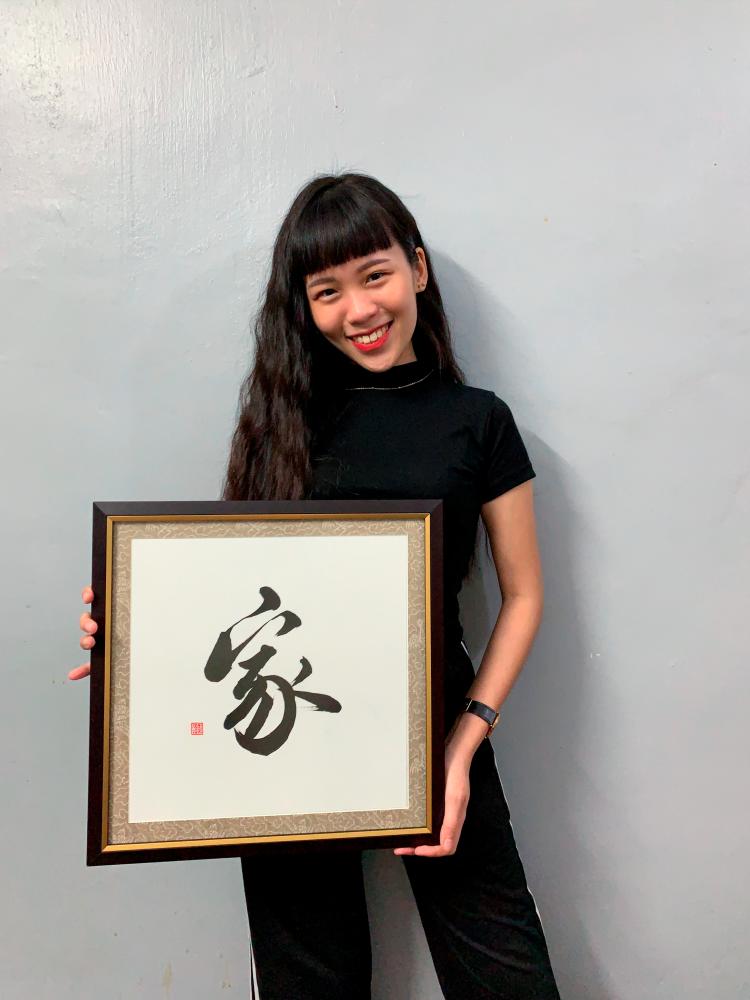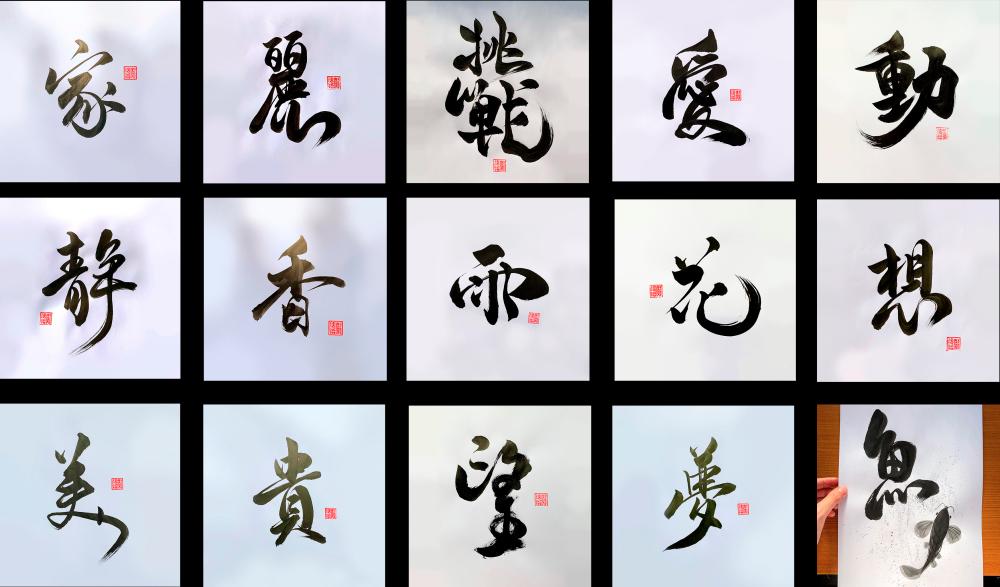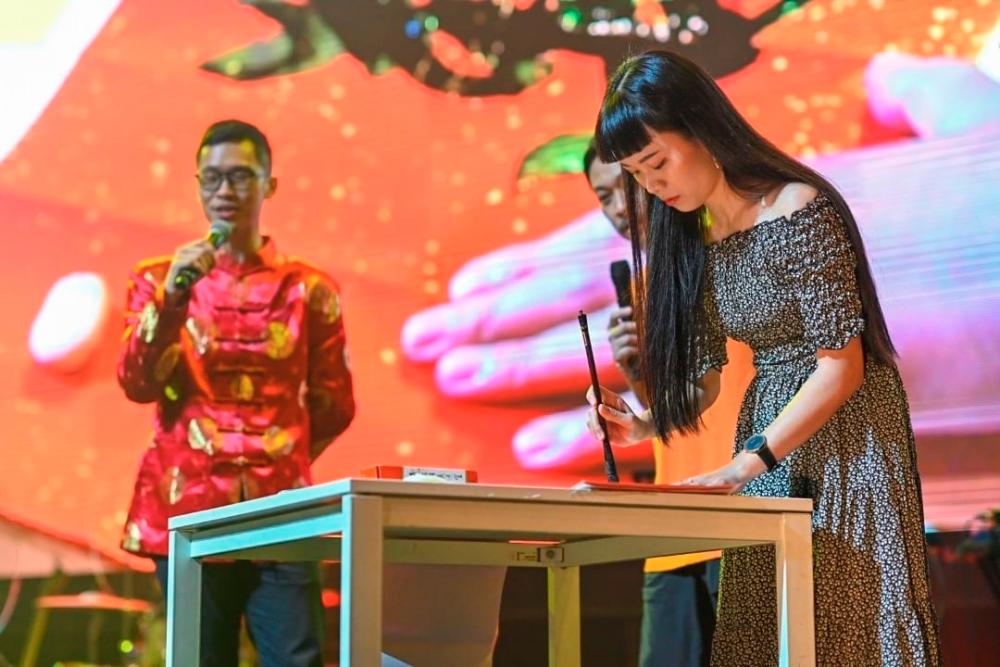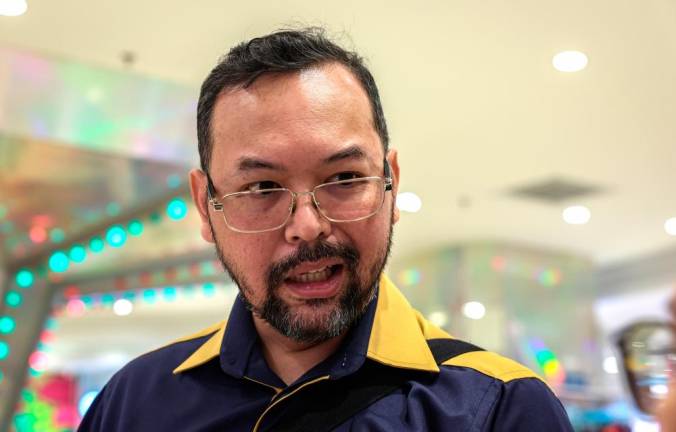IN Chinese calligraphy, how one writes is equally important as to what one writes.
Fong Sheeney discovered her love for Chinese calligraphy at the age of seven, and over the years, her burgeoning passion continues to flourish. Her writing style evolved as she matured, incorporating her personal stories and her changing perspectives.
The sublime art form emphasises greatly on technique, with very precise brushstrokes for each character. However, its traditional and fundamental rules can be broken – provided one has mastered the essential techniques.
Fong explains: “The simplicity of the calligraphy tools is belied by the complexity of effects, which [are based on] consistency and the amount of ink carried by the brush.
“Chinese calligraphy is not an abstract form despite its abstract appearance. Chinese characters are lively, tightly integrated with the forces of nature, and kinesthetic energies synonymous with the calligrapher.”

What is it about Chinese calligraphy that resonates with you?
“I guess it’s related to my identity. I found myself savouring every moment of the writing process. I fell in love with the aesthetic and fluidity of Chinese characters.
“For instance, the complexity even in writing simple Chinese characters, the expression of tenacity in softness in the writing style and also the unfolding of one’s essence and personality through writing Chinese calligraphy.
“This has made me realise the authenticity of Chinese calligraphy, and the importance of the Chinese language and characters to be inherited in this rapidly evolving society, inwhich handwriting skills are declining, while computer skills are in high demand.
“This art and its artistry has been a big part of my life, it shapes who I am today and I’d love to spread this artistic culture and tradition to the people around me.”
You’ve named historical Chinese calligraphers Zhao Mengfu and Wang Xizhi as your inspirations.
“When I was a beginner, I practised with various stone inscription copybooks. After years of guidance and observation, my teacher saw the potential development in my writing style, and that is how I started studying these two calligraphy masters.
“I was captivated by Zhao Mengfu’s versatility and skill in different types of scripts. His unfettered expression and the portrayal of intimacy to nature in his artworks are mesmerising.
“The saint of calligraphy, Wang Xizhi was the master of all forms of Chinese calligraphy, especially [for] his running script, which is still one of my practice materials today.
“Both of the calligraphers’ strokes and brush movements are fluent and clear, the structure of the characters are wide and solid, yet smooth and sleek at the same time.”
How would you describe your writing style?
“I’d say that it’s a mixture of cursive and regular scripts. It’s quite feminine and slender, but with bold and rapid strokes within.
“I tend to diversify my writing style, mostly depending on the meaning of the Chinese characters, the emotions that I want to convey and the space of the artwork at hand.
“These aspects are put into considerations to create harmony and counterbalance the arrangement of each Chinese characters’ dynamic.
“Looking back at my early works, my style has become more mature and firm, with a breath of confidence and audacity.
“I realised that there is no right or wrong way when approaching one’s art. Rather, it’s about doing things my way.”
Do you think Chinese calligraphy is a vanishing art form?
“Yes, particularly during my generation and the younger generation. For instance, we often forget the Chinese characters, so we’d figure them out by typing pinyin in our phones or laptops.
“The patience required to practice Chinese calligraphy – repeating the same brushstrokes again and again could be seen as a contrast to the fast pace of life today.
“Additionally, Malaysia’s current examination-oriented education system discourages the practice of calligraphy, since good calligraphy wouldn’t guarantee a student’s university enrolment.”
Tell us a little about your affinity for music.
“Music is definitely the best part of my life, and I’m so grateful I got to grow up playing music. It plays a big role in my inspiration, expression, communication and also my religion.
“And of course, the art that I’m doing now is closely related to music too.
“I’m currently working on something in an attempt to fuse the best of both worlds. How exciting it is!”
Are there similarities in what you do, as a Chinese calligrapher and a musician?
“Both fields require sensitivity, commitment, emotion, balance, tension, improvisation, arrangement, calculation and also uninterrupted flow and rhythm.
“You could say that they are performed on different spaces or platforms but both art forms are able to portray personal narratives of the artist.
“Undoubtedly, both are capable to soothe and speak to the minds and souls of the audiences by creating dialogues and awareness.”














